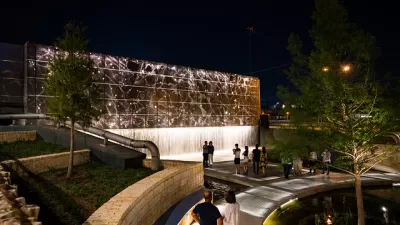Texas has come under scrutiny for a pattern of developing low-income housing projects in areas already suffering from poverty and blight. Karisa King describes how the NIMBY mentality is reinforced by the subsidization system.
A recent analysis by the Texas Tribune and The San Antonio Express News has found that subsized apartment developments have been disproportionately built in non-white areas throughout Texas. Low income housing tax credit programs are designed to break up concentrations of poverty and facilitate affordable housing in safe neighborhoods with access to jobs, good schools and transportation.
Plans to build low-income complexes in affluent neighborhoods are rarely met with open arms by existing residents. A recent proposal to build a 68-unit apartment building for low-income seniors near the fashionable neighborhood of Stone Oak was shut down after three short months of citizen outcry. President of the Mount Arrowhead Homeowners Association, Francisco Martinez, described their opposition this way:
"These are single-family homes. Anything that takes away from that takes away from why we bought into it."
It's not that developers don't understand the mission of the tax credit programs. Competition for subsidies is tight, though, and approval is based on a point system. "Community Support" is the second highest point-getter when projects are scored. Jennifer Gonzales, executive director of the Alamo Area Mutual Housing Association admits:
"Usually your more organized neighborhoods and communities are ones that have more resources, and those are the ones that are going to get organized more quickly if they don't want you there. We just don't even go there."
Thanks to Jessica Brent
FULL STORY: Low-Income Housing Effort Compels Building in Poor Areas

Maui's Vacation Rental Debate Turns Ugly
Verbal attacks, misinformation campaigns and fistfights plague a high-stakes debate to convert thousands of vacation rentals into long-term housing.

Planetizen Federal Action Tracker
A weekly monitor of how Trump’s orders and actions are impacting planners and planning in America.

San Francisco Suspends Traffic Calming Amidst Record Deaths
Citing “a challenging fiscal landscape,” the city will cease the program on the heels of 42 traffic deaths, including 24 pedestrians.

Defunct Pittsburgh Power Plant to Become Residential Tower
A decommissioned steam heat plant will be redeveloped into almost 100 affordable housing units.

Trump Prompts Restructuring of Transportation Research Board in “Unprecedented Overreach”
The TRB has eliminated more than half of its committees including those focused on climate, equity, and cities.

Amtrak Rolls Out New Orleans to Alabama “Mardi Gras” Train
The new service will operate morning and evening departures between Mobile and New Orleans.
Urban Design for Planners 1: Software Tools
This six-course series explores essential urban design concepts using open source software and equips planners with the tools they need to participate fully in the urban design process.
Planning for Universal Design
Learn the tools for implementing Universal Design in planning regulations.
Heyer Gruel & Associates PA
JM Goldson LLC
Custer County Colorado
City of Camden Redevelopment Agency
City of Astoria
Transportation Research & Education Center (TREC) at Portland State University
Jefferson Parish Government
Camden Redevelopment Agency
City of Claremont





























